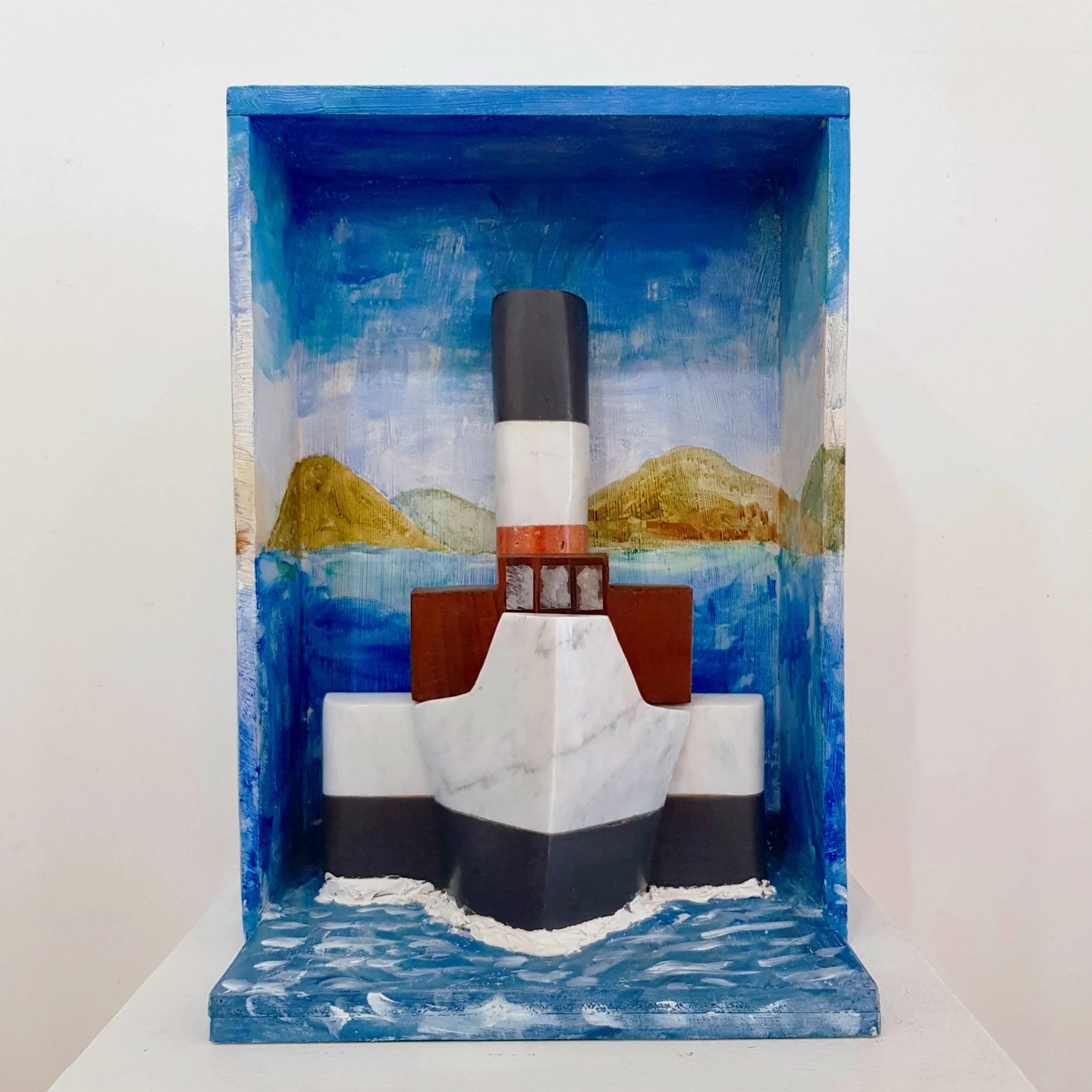Christopher Le Brun's Pocket Treasure
18 November 2021
Artist, Christopher Le Brun tells us about a work of art with particular meaning to him - the next instalment of our series looking at different people’s ‘pocket treasures’.
Joe Lloyd
Joe Lloyd is a journalist who writes about architecture and visual art for The Culture Trip, Elephant, and The Economist's 1843 magazine, among others.
Samuel Palmer (1805 - 1881), The Sleeping Shepherd, 1857, etching.
Image courtesy of Christopher Le Brun.
The Sleeping Shepherd is the acme of pastoral. The 1857 etching by the great Romantic artist Samuel Palmer (1805 — 1881) depicts the eponymous herdsmen in a state of serene repose, his crook laid by his side while his flock mingles amicably. In the distance, past the artist’s characteristic trees, rises a hill. Atop it two oxen and their ploughman begin their day's toil. There might be no more enchanted depiction of man in harmony with nature. “Palmer,” explains artist Christopher Le Brun, “hits a note of pastoral romance which is very much at the heart of the classic English sensibility.”
At first glance, Palmer and Le Brun might seem strange bedfellows. The Sleeping Shepherd is minute, measuring three by three and a half inches. Le Brun is celebrated for his enormous, iridescent paintings, which are often abstract. But there are commonalities. Both are literary: Le Brun has spoken eloquently on the role of poetry in painting, while Palmer translated Virgil’s Eclogues. Both are engaged with landscape, however overtly or obliquely. And the works of both are imbued with a numinous Romanticism.
Le Brun came into possession of an etching of The Sleeping Shepherd in 1989. “I was always interested in Palmer’s work”, he recounts, “but around this time I was starting to make some etchings of my own.” It was while enquiring about a Graham Sutherland print that Le Brun learnt of a gentleman in Folkestone who was selling a complete collection of Palmer’s etching. “At that time,” Le Brun continues, “our children were quite young. So there was that little gap in one’s life where you think you can spend some money — that goes away very quickly, I have to say!”
The artist and his family hightailed it to the Kentish port. The seller was a town councillor with a passion for Palmer. “He insisted,” recalls Le Brun, “that the whole introduction process was done very ceremoniously. So he took us in one by one into one of the rooms of his house and showed us the etchings, all laid out.” The seller had amassed his collection by perusing auction catalogues. As well as collecting all 17 of Palmer's etchings, he had written and self-published his own catalogue describing each work and its prominence. “It was wonderful to see,” says Le Brun, “but it was also slightly sad. Because he’d spent 20 years forming the collection and he wanted to give them to his son. But his son was an army major, serving in Northern Ireland. He didn't have much time for Samuel Palmer.”
Convinced by Le Brun’s own commitment to etching, the councillor sold him the entire set, along with a set of rare books. The Sleeping Shepherd stood out immediately. “It’s probably the most special piece in the collection,” says Le Brun, “and it is the first state, it’s very fresh and very rare.” Between 1978 and 1979, it appeared in the Victoria and Albert Museum’s seminal exhibition Samuel Palmer: A Vision Recaptured. Today, it hangs above Le Brun’s home desk, a source of inspiration.
Le Brun does not consider himself a collector. “Though the irony is,” he says, “I spent my professional life surrounded by collectors. And I like the collectors’ frame of mind… I think the really serious collectors have a wonderful innocent enthusiasm.” But he does live surrounded by artworks: pieces gathered over time, given as gifts, or swapped with friends. Another small treasure is a work by the Cornish artist-fisherman Alfred Wallis, showing three sailing boats in silhouette. “What’s extraordinary,” says Le Brun, “is that my daughter, Lily, is about to write a book called Looking to Sea, and one of the chapters is devoted to Wallis. It could be that having grown up with that little painting, it just stuck in her mind.”
He also lives with works of his own, and his those of wife, fellow artist Charlotte Verity. “She brings a very critical eye to bear on any of my works,” explains Le Brun, “so I have to pass that test, and vice versa. And many of my own works are rather big, which makes it quite difficult!” The largest is a design for the safety curtain at the Royal Opera House, about eight by seven feet, which hangs in the sitting room (the completed curtain would have been around 70 by 50 ft). “And they never did it,” says Le Brun, “so that's one example of living with one’s work: it’s what might have been."











